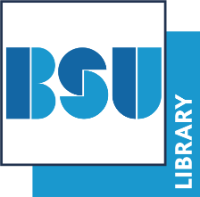Massong, N-F (2024) Circumventing plague: the spatial experience of women and men during the outbreak of 1630-31 Bologna. PhD thesis, IMT Lucca, Italy.
(Request more information)Abstract
Though managing early modern plague in northern Italy necessitated regulations and restrictions of movement in order to combat outbreaks, the factors resulting in immobility at the same time created opportunities for mobility. The ability to move and interact within the urban environment was contingent on social factors such as age, gender, class and occupational status and remained essential in the shaping of the spatial experience. Moreover, the ability to move across barriers, such as crossing the threshold of the home, formulated possibilities for social life to flourish during plague. This study investigates the relationships between early modern people and places during the period of plague in Bologna from 1630-31 through the lens of the new mobilities paradigm. This model interrogates how places are continuously shaped and reshaped by way of human and non-human interaction. Adopting approaches emerging from the mobility turn, this research places emphasis on the social drivers that contributed to movement and asks: how did mobility inform the various experiences of the plague of 1630-31 in Bologna? Building on the extensive studies on seventeenth-century plague for the cities of Milan, Venice and Florence, this study offers new insights into the early modern experience and approaches to plague from the perspective of the significant northern Italian centre of Bologna. This study draws on a broad array of primary documents including handwritten and printed records, encompassing contemporary chronicles, manuscripts and legal decrees. Historical sources including plague tracts reveal contemporary understanding of combatting plague. Visual sources, such as early modern paintings and architectural plans, alongside digital maps of Bologna’s network of plague hospitals, similarly play a crucial role in uncovering the spatial experience during plague. The research presented in this study contends that the urban experience and the public health management of early modern plague was informed by mobility. Architecture, in combination with regulations and disciplinary punishment, were used to contain, control and limit the movement of people. Despite immobility, men and women found ways to circumvent restrictions. They crossed architectural divides by way of health passes or illicit activities and traversed physical but also social boundaries through professional opportunities. Bolognese citizens continued to move by way of engaging with devotional performances, such as processions. Ritualised performance was enacted to counteract the moral causes of the illness and ultimately served the social life of the community. Mobility was also considered an asset for plague management according to seventeenth-century practice as demonstrated in the creation and employment of a network of plague hospitals in Bologna. Moreover, this study reveals how social dimensions contributed to varying degrees of mobility as women, men, the nobility and the poor each had diverse experiences of plague.
| Item Type: | Thesis (PhD) |
|---|---|
| Note: | This thesis is available to read online at the URL above. |
| Subjects: | D History General and Old World > D History (General) > D901 Europe (General) D History General and Old World > DG Italy N Fine Arts > NA Architecture N Fine Arts > ND Painting |
| Divisions: | Bath School of Design |
| Date Deposited: | 16 Dec 2024 16:56 |
| Last Modified: | 16 Dec 2024 16:57 |
| URN: | https://researchspace.bathspa.ac.uk/id/eprint/16756 |
 |
Request a change to this item or report an issue |
 |
Update item (repository staff only) |

 Tools
Tools Tools
Tools